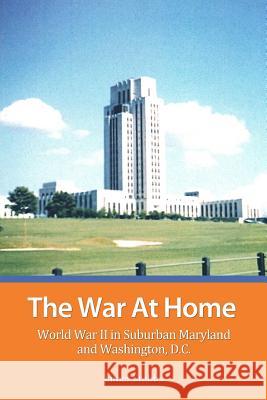The War at Home: World War II in Suburban Maryland and Washington, D. C. » książka
The War at Home: World War II in Suburban Maryland and Washington, D. C.
ISBN-13: 9781478252375 / Angielski / Miękka / 2012 / 156 str.
The War at Home: World War II in Suburban Maryland and Washington, D. C.
ISBN-13: 9781478252375 / Angielski / Miękka / 2012 / 156 str.
(netto: 30,30 VAT: 5%)
Najniższa cena z 30 dni: 31,82
ok. 16-18 dni roboczych
Bez gwarancji dostawy przed świętami
Darmowa dostawa!
America was transformed in World War II. To those who came after, the events and situations in the wartime Washington of World War II will seem strange. Among those covered in the book was the mobilization of junior and senior high schools in a Maryland suburb in which all students were broken down into military-style units (squads, platoons, and companies ). Coach cars on crack "all-nighter" inter-city trains leaving Washington were the scene of a very unusual practice which never failed to occur. Civilians (men and women) insisted upon giving up their seats to men in uniform. Tales of driving in and around the blacked-out Bethesda Naval Hospital grounds at night, and vivid accounts of extremely low-flying U.S. combat aircraft over residential neighborhoods are in the book. All of this (and more) holds a promise of interesting reading, perhaps with a touch of skepticism. A brief review of the historical background will help put the book into context. That World War II was global there's no denying, but it could be broken down into two major theaters, Europe and the Pacific, each in its own hemisphere. Conflict in each theater began with abrupt, rapid-fire, and overwhelming early victories by the aggressors, Germany and Japan. Though located in two widely separated parts of the world the tactics were the same, German blitzkrieg in Europe and Japanese island-hopping in the Pacific. Though there were no battles fought in the United States, the war years covered in the book were far from passive. The nation's Capital and its surrounds were focal points of the war in America. Washington was invaded by civilian forces from afar which took the hundreds of thousands of new jobs needed to prosecute the war. These workers nearly equalled the populace. A wartime footing, which developed rapidly, was distinctly different from that which preceded it, and for those who lived it, there was plenty of activity. The war years at home were characterized by much doing without and making-do (rationing), long hours, long lines, cold and dark winters, continuous war or scrap drives of almost everything imaginable, a flood of military personnel and vehicles on the streets, and U.S. combat aircraft overhead (sometimes not very far overhead). All sectors of society were affected by the war, including schools (early chapters pay particular attention to the schools). "The War at Home" is an account of the happenings along the banks of the Potomac as told from an autobiographical perspective.
Zawartość książki może nie spełniać oczekiwań – reklamacje nie obejmują treści, która mogła nie być redakcyjnie ani merytorycznie opracowana.











